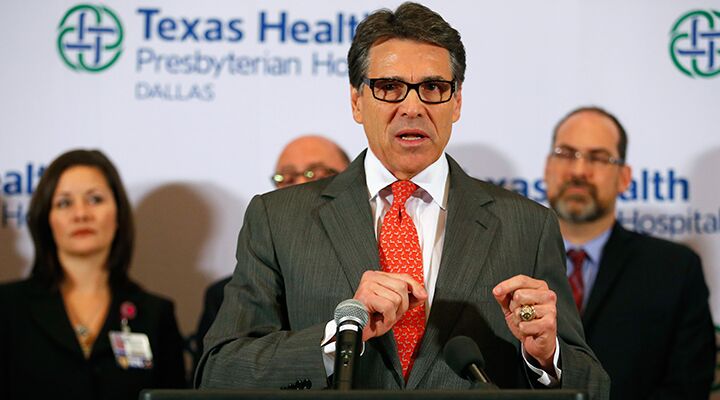
First Ebola Diagnosis in the U.S.
The deadly virus that has infected over 7,000 people in West Africa has been diagnosed in one patient the United States. The Centers for Disease Control (cdc) told reporters Tuesday that a man who recently traveled from Liberia has the Ebola virus and is in isolation at a Dallas hospital. Authorities are not revealing his nationality or age.
The patient carried the Ebola virus with him when he returned from a visit to Liberia on September 20. But the symptoms didn’t show until four days later. Health authorities assert that Ebola is only contagious after symptoms start showing. The patient was not quarantined until September 28 and thus exposed several people to the infection.
The city of Dallas activated its Emergency Operations Center and is on Level 2: High Readiness—the second-most critical level.
Two weeks ago, President Barack Obama assured Americans that the “chances of an Ebola outbreak here in the United States are extremely low.” He continued, “We’ve been taking the necessary precautions, including working with countries in West Africa to increase screening at airports so that someone with the virus doesn’t get on a plane for the United States. In the unlikely event that someone with Ebola does reach our shores, we’ve taken new measures so that we’re prepared here at home.”
Depending on how you look at it, one case in the United States compared to the 7,178 cases of infection in West Africa is “extremely low.” Responsible authorities have had a hard time maintaining the tough balance between extreme caution and scaremongering, mitigating panic and trivializing the disease. But trivializing the threat of Ebola could be disastrous.
On one hand, ebola has killed far fewer people than other diseases like cholera, malaria or influenza. On the other hand, Ebola’s symptoms are abnormal and scientists still don’t know much about the disease. It hasn’t been established whether bats are the only carriers of the virus. Neither have there been conclusive studies on the possible airborne strains of Ebola.
It’s not clear how the Dallas patient contracted Ebola. Did he have contact with someone with noticeable symptoms? Nor do authorities know how many people this patient might have infected. A complicated process of “contact tracing” is underway to find and quarantine hospital staff, family members and friends who came in contact with the patient during the time he was considered contagious. They’ll be monitored for 21 days, and if any are found to have the Ebola infection, that process will be repeated for the new patient(s).
Although Liberia has increased thermal screening at international airports to avoid the “export” of Ebola to other nations, this man somehow got through and brought it into the United States.
The Ebola crisis in West Africa should show us how potentially devastating this virus (and other viruses) could be. The current death toll in West Africa is 3,338; 1.4 million cases of Ebola could be possible by January 2015. Ebola and fears of Ebola have devastated West African nations’ already fragile economies. The World Bank reported on September 17 that the three worst-hit countries—Liberia, Guinea and Sierra Leone—face a “potentially catastrophic” economic depression next year if the spread of Ebola continues. Under the worst-case scenario, the World Bank foresees Guinea’s economic growth falling 2.3 percentage points, Sierra Leone’s dropping 8.9 percentage points, and Liberia’s decreasing 11.7 percentage points. Socially, the Ebola outbreak has resulted in curfews, city lockdowns and riots.
Disease pandemics are prophesied in the Bible, and, as our article “SARS and Rumors of SARS” explains, their ramifications will be far-reaching. For more on this subject, read our free booklet The Four Horsemen of the Apocalypse.
